Welcome to Gaisberg! Here you’ll find a scenic mountain rising just east of Salzburg in Austria. If you’ve stumbled upon this travel guide while searching for unique things to do near one of Europe’s most iconic cultural hubs, you’re in luck. Gaisberg delivers a mix of alpine tranquility and surprising adventure. It’s all within easy reach of Salzburg’s urban comforts. Topping out at around 1,288 meters, it’s a modest peak by Austrian standards—but don’t let that fool you. Gaisberg’s panoramic views, rustic dining spots, and year-round activity scene ensure it’s no mere backdrop.
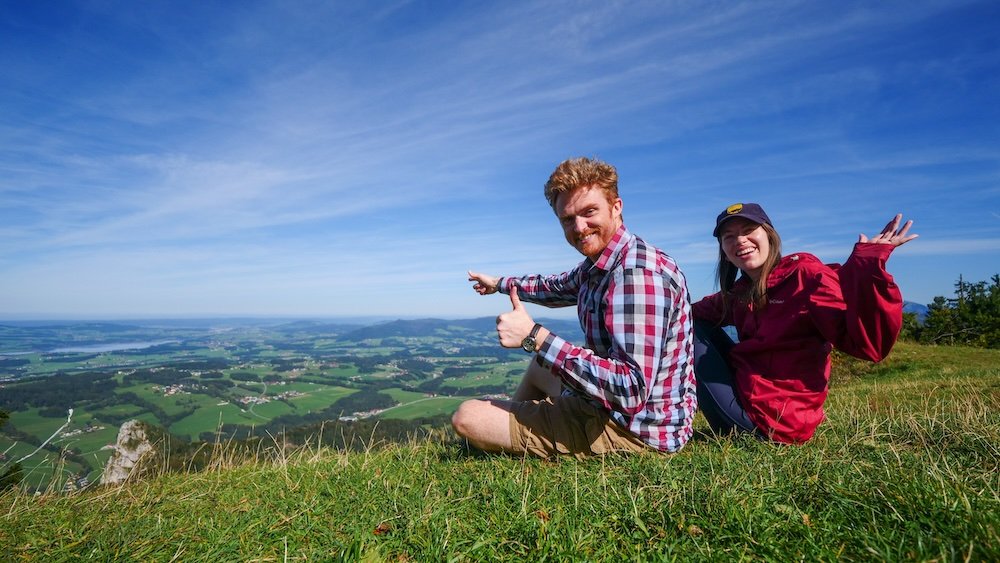
Planning a trip around a lesser-known mountain can bring up questions: How do I get there? Is the terrain family-friendly or do you need serious hiking boots? Are local restaurants open outside peak tourist season? Gaisberg has its quirks—like ever-shifting weather patterns or limited public transport after certain hours.
Our Travel Video From Austria on Samuel and Audrey YouTube Channel: Nomadic Samuel + That Backpacker hosting
Why Gaisberg?
This guide is for a wide net of travelers. Families with kids who want short nature walks. Couples craving romantic peaks and scenic lunches. Budget explorers looking for a quick day trip from Salzburg. Seasoned hikers hoping for moderate trails. Or laid-back culture buffs intrigued by local mountain traditions. If you like mild adventure, hearty food, and peaceful views, you’ll find Gaisberg wholly satisfying.
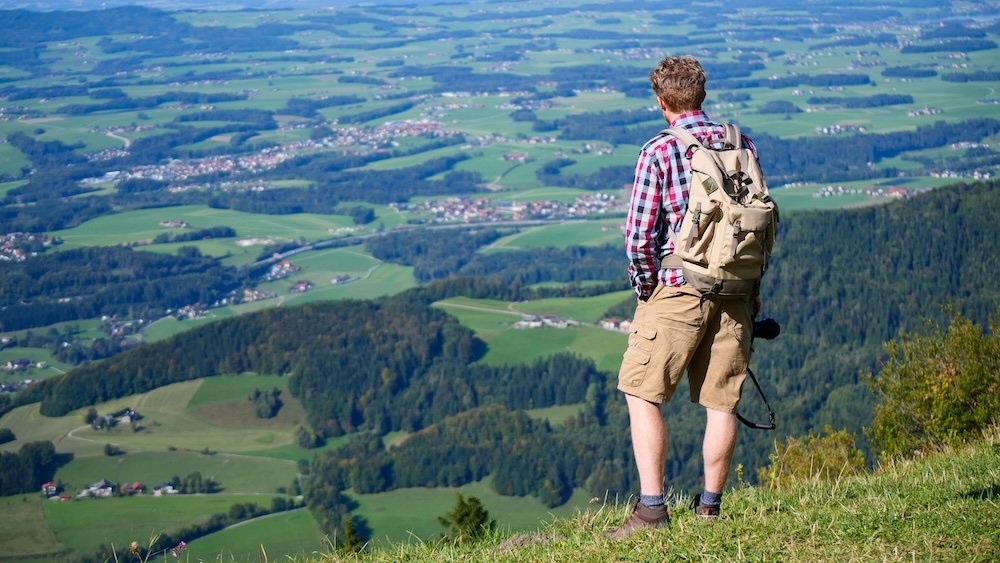
Gaisberg extends an alpine welcome. Wide open fields, crisp breezes, and a handful of cozy spots to warm up after a brisk walk. Below, we’ll spotlight the Top 10 Things To Do, from easy hillside rambles and paragliding opportunities to local food traditions and cultural tidbits. Then, we’ll dive into what to eat, recommended tours, lodging tips, day-trip ideas, how to get around, and some final thoughts to wrap it all up. Ready to elevate your Salzburg itinerary? Let’s head uphill into Gaisberg’s invigorating world.
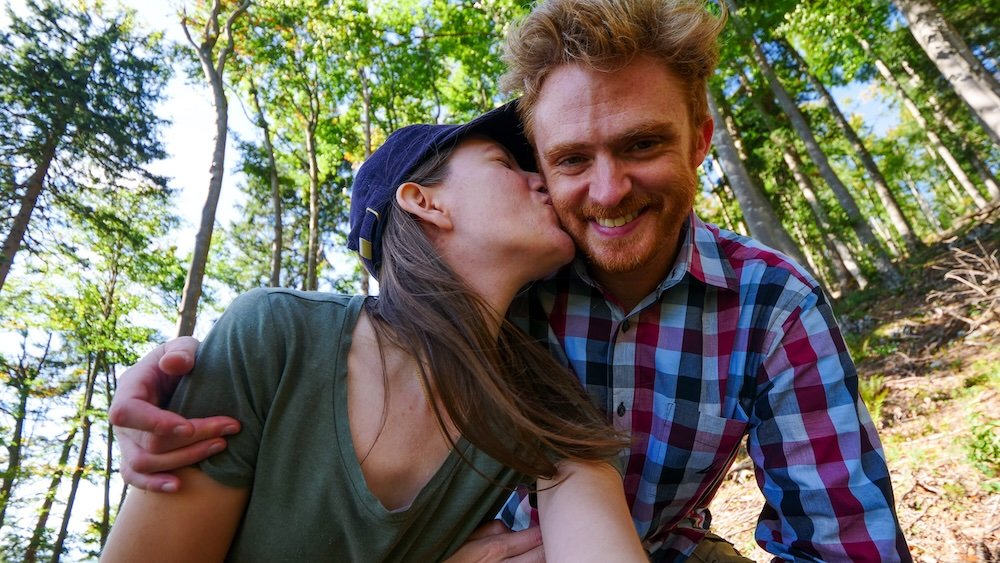
Top 10 Things To Do in Gaisberg, Austria For Visitors
Gaisberg may appear a modest peak. But it’s brimming with possibilities—things to do that span nature, culture, and a dash of adrenaline. Below are ten activities to consider:
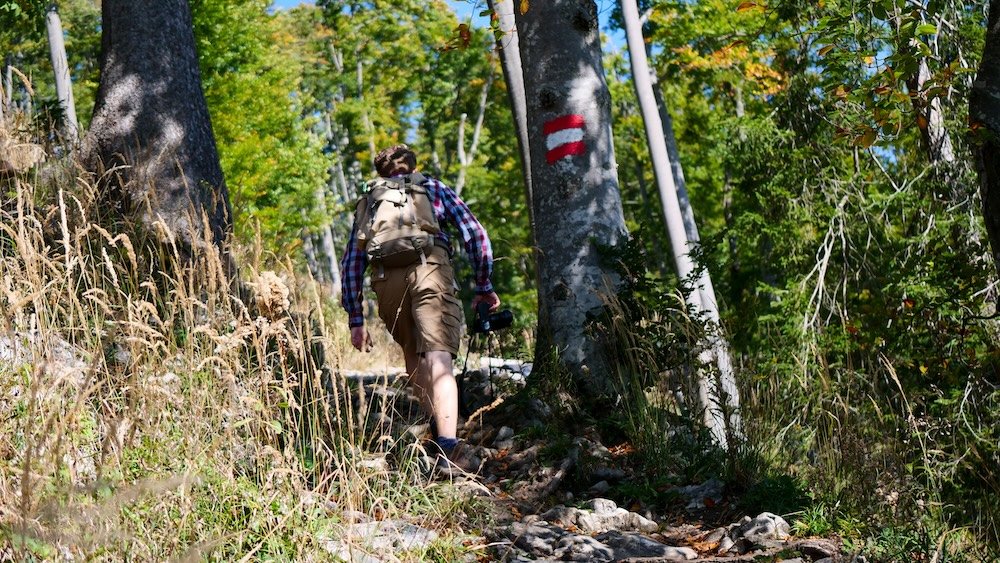
1) Sunrise Hike to the Summit
A sunrise hike up Gaisberg is a dazzling way to greet the day. The ascent is moderate—steep in parts—but well-marked paths ensure you won’t stray off course. Arriving early means fewer hikers, letting you savor birdsong echoing across the valley. At the summit, pastel colors bloom over Salzburg’s skyline, and on clear mornings, you might glimpse distant alpine peaks shimmering in soft gold. The crisp dawn air feels electrifying, especially as you shed layers from the uphill climb. Once the sun fully rises, the landscape glows, and your sense of accomplishment merges with pure wonder.
- Gear: Wear layers, sturdy boots, and bring a flashlight or headlamp for pre-dawn navigation.
- Timing: Check sunrise times, factoring in a generous hiking window so you’re not rushing.
- Nearby Shelter: Some huts open early, but confirm schedules if you crave coffee or breakfast on-site.
Tip: Pack a small thermos—a warm drink at the summit beats any café ambiance.
2) Paragliding Tandem Flight
For adrenaline-seekers, paragliding off Gaisberg transforms the mountain into a launchpad for soaring above Salzburg. Tandem flights pair you with an experienced pilot who handles the technical side—your job is to jog forward at takeoff, then glide free. The perspective is surreal: rooftops and forests shrink beneath your dangling feet, and wind currents cradle you gently as you float. Some pilots let you steer briefly if conditions allow, giving a taste of flight’s freedom. Winter or summer, the vantage is epic—snow-laden valleys or lush green meadows, respectively. You’ll land smoothly, heart pumping, likely craving another aerial spin.
- Booking: Multiple local paragliding schools provide gear, pilot, and instructions.
- Photo/Video: Many outfits offer in-flight filming options for a small fee.
- Physical Requirements: Mild fitness is enough, but inform them of any knee or back issues.
Tip: Pick a day with clear skies—the better the visibility, the more jaw-dropping your flight experience.
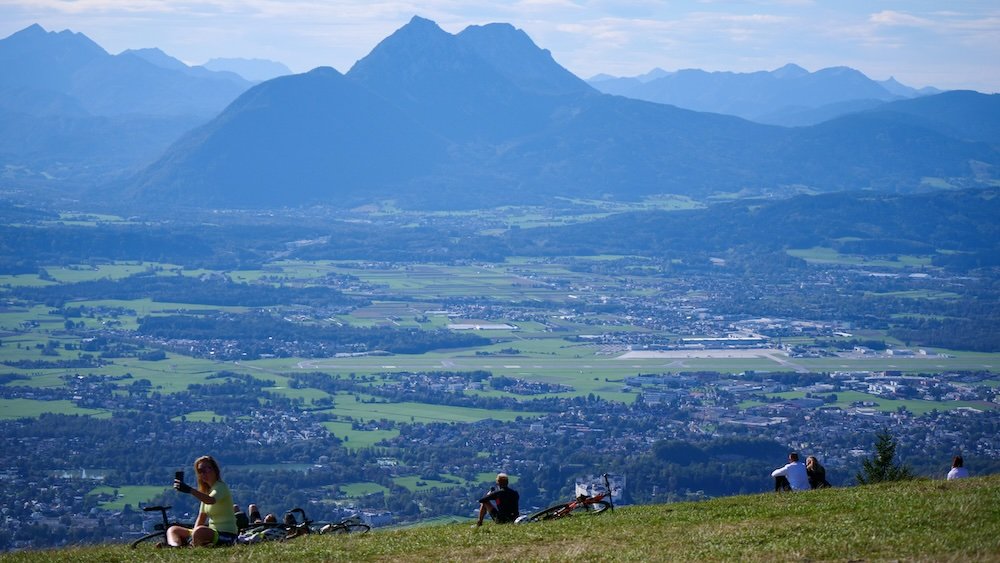
3) Picnic at the Zistelalm
Zistelalm is a charming mountain inn perched partway up Gaisberg, surrounded by soft meadows and rolling slopes. Grabbing a simple lunch inside is lovely, but an even better plan is to pack your own picnic and sprawl on the grass outside. Kids can frolic around while you admire panoramic glimpses of Salzburg’s Old Town and beyond. The inn’s café vibe also means you can pop in for dessert—a slab of apple strudel or fresh berry cake is common. Locals often bring dogs or guitars, turning the clearing into a laid-back weekend retreat. It’s a scene of easy camaraderie, ensuring everyone feels at home amid the hills.
- Access: A short hike from Gaisberg’s main parking or bus stop leads you here.
- Menu: If you skip the picnic route, the inn’s hearty dumplings or soups pair well with crisp Austrian beer.
- Ambiance: Rustic wooden benches, thick-limbed trees, and usually a friendly staff cameo.
Tip: Scope out a vantage bench near the edge for the best city-lake-river trifecta view while munching.
4) Mountain Biking Along Forest Trails
Mountain biking on Gaisberg merges adrenaline with scenic immersion. Trails vary—some gentle gravel paths hugging lower slopes, others technical singletracks that demand focus and skill. You’ll weave through pine groves, occasionally glimpsing Salzburg’s rooftops before plunging back into shady greenery. Bike rentals or guided trips are available in the city; staff can advise on route difficulty. Early mornings are quieter, letting you tackle ascents without dodging hikers. As you crest ridges, the wind whips by, fueling a sense of freedom that’s distinctively Alpine.
- Gear: Helmets are essential, plus gloves for grip and potential tumbles.
- Route Markings: Familiarize yourself with color-coded trail signs indicating technical level.
- Fitness: Even with moderate fitness, choose routes aligned with your comfort—no need to go extreme.
Tip: Plan for breaks—snap pictures or hydrate at vantage points, because that’s half the fun.
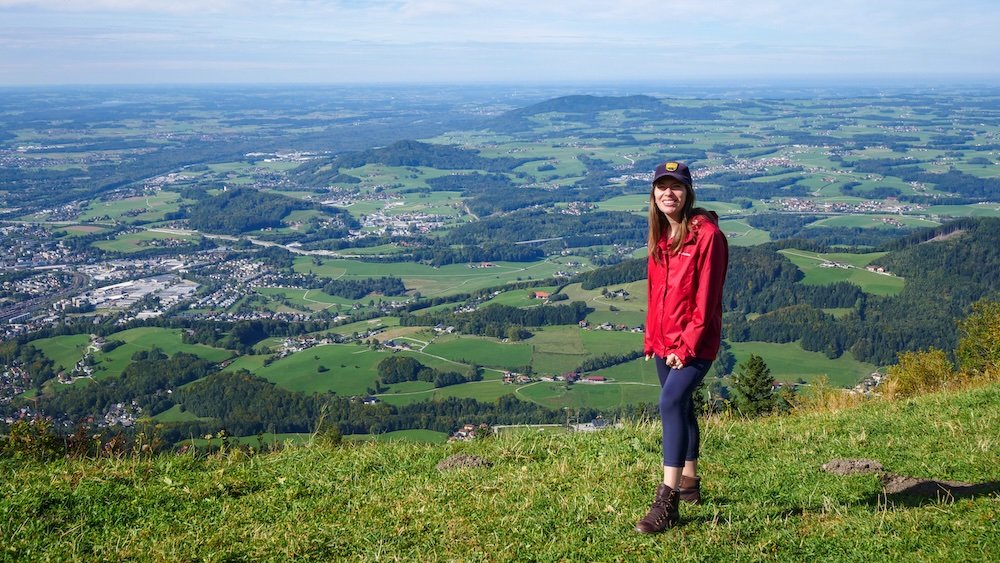
5) Take the Gaisberg Bus for City Views
If you’d rather skip uphill exertion, the Gaisberg Bus from Salzburg whisks you to the summit in comfort. As it ascends winding roads, glimpses of the city unfold below, each turn revealing a broader panorama. Tourists and locals alike ride this route—some carrying paragliders, others just day-trip gear. The bus terminus places you near viewpoints and short walking loops, enabling a leisurely exploration of the summit area. On breezy days, you might witness paragliders launching, adding a dynamic flourish to the scene. This simple ride is a low-stress way to enjoy Gaisberg’s magic.
- Schedule: Timetables vary, especially off-season, so double-check official websites or city info.
- Ticket: Standard city bus fares often apply, or consider a Salzburg Card if it covers your ride.
- Time: The round trip can last a couple of hours, though staying longer for a short hike or café stop is typical.
Tip: Sit on the left side going up for the best scenic vantage—some hairpin turns offer gasp-worthy glimpses.
6) Winter Snowshoeing Adventures
When snow blankets Gaisberg, snowshoeing is an enchanting way to traverse silent forests and pristine drifts. Trails—some official, others simply well-trodden by locals—crunch underfoot as you immerse in a winter wonderland. Crisp air stings your cheeks, but the exertion keeps you warm. Unlike skiing, snowshoeing doesn’t demand advanced skill, just decent balance and a sense of fun. Many Inns or gear shops rent out snowshoes and poles, plus advise on best routes for your fitness. The hush of snow-laden pines, broken only by your footsteps, can be profoundly peaceful.
- Safety: Always check avalanche advisories if you head off main paths or near steep slopes.
- Guided Tours: Some local guides offer half-day group treks, adding wildlife insights or hot drink stops.
- Bonus: Return to a mountain hut for hot chocolate or mulled wine, capping the frosty outing in warmth.
Tip: Layer up—with thermals, a waterproof outer shell, and a hat or beanie to keep snug in variable conditions.
7) Sunset Photography at Nockstein Rock Formation
Close to Gaisberg’s main ridge lies Nockstein, a craggy outcrop ideal for capturing dramatic sunset photos. A short but occasionally steep trail leads you up to vantage points overseeing forest carpets, city lights, and distant alpine silhouettes. Toward evening, the sky glows in pink and gold, painting each rocky surface with mesmerizing hues. Photographers set up tripods, while casual observers simply soak in nature’s spectacle. If wind picks up, you’ll hear it whistle through the pines, underscoring the sense of remote grandeur. The interplay of fading daylight across land and sky can yield some of your trip’s most cherished images.
- Lighting: The half-hour before sunset is prime—arrive early to stake out a spot.
- Safety: The path can be rocky; sturdy footwear and a flashlight for the return are crucial.
- Quiet: With fewer visitors than Gaisberg’s main summit, Nockstein fosters a serene ambiance.
Tip: Stay 15 minutes past official sunset—afterglow can color the sky with subtle tints you won’t want to miss.

8) Traditional Lunch at Zistel-Stüberl
Zistel-Stüberl, perched along the Gaisberg slopes, invites you to sample robust Tyrolean lunches with an unbeatable viewpoint. The wooden terrace presents a front-row seat to the valleys below—especially enchanting in mid-autumn or late spring. Inside, simple décor merges with mouthwatering aromas: think goulash, dumplings, or pan-fried trout from local waters. Portions tend to be generous, ensuring you’ll refuel after a morning’s hike or paragliding session. Friendly staff might recommend daily specials, often featuring seasonal vegetables or house-made schnapps. In mild weather, you might linger outdoors, sipping a beverage as your gaze roams across Salzburg’s broad panorama.
- Recommended Dish: Many rave about the cheese dumplings (Kaspressknödel) in broth or with a crisp salad side.
- Payment: Cash is common, though some accept cards—carry euros to be safe.
- Crowds: Midday weekends can be busy; arriving slightly before noon often secures a prime seat.
Tip: Ask staff about any local events—Zistel-Stüberl sometimes hosts small folk music afternoons.
9) Sledding in Winter
When snow graces the slopes, Gaisberg transforms into a friendly sledding spot. Various runs cater to different skill levels, from gentle inclines for families to faster tracks for thrill-seekers. Rent a sled at nearby huts or in Salzburg city shops, then ascend by foot or take a dedicated lift if available that season. The crisp rush of wind on your face, combined with powdery fluff, forms a nostalgic pastime for kids and the young at heart. Temperatures may drop quickly, so layering is key. After multiple zips downhill, a hot punch or Glühwein from a slope-side café tastes extra delightful.
- Safety: Helmets recommended for kids or steep runs.
- Timing: Early mornings or weekdays see fewer crowds, giving you more space to glide.
- Variation: Some sled trails remain lit at night, offering a magical starry ride.
Tip: Bring a change of dry clothes—tumbling in snow can leave you damp, and you’ll want warmth post-sledding.
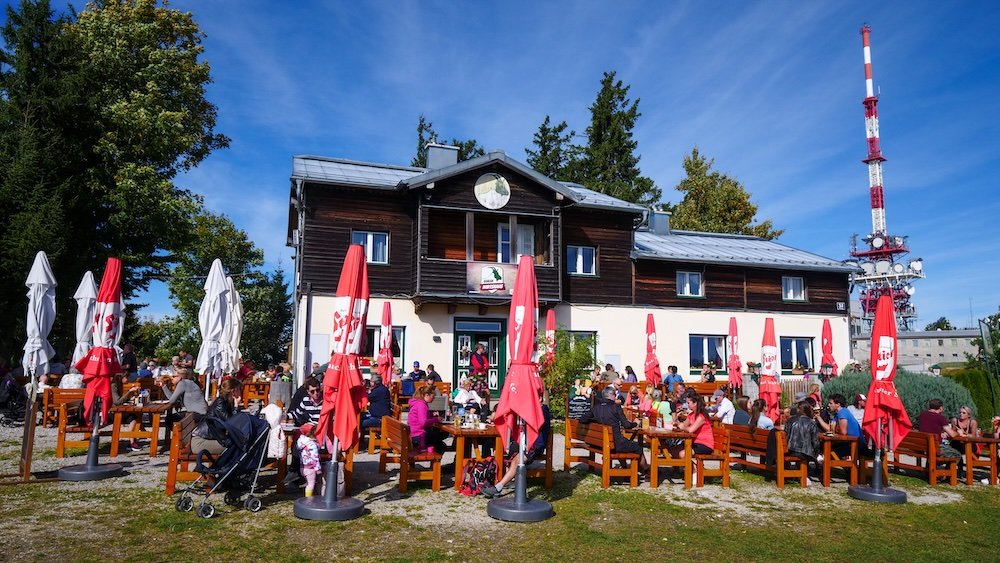
10) Attend a Local Event at the Gaisberg Summit Restaurant
Gaisberg’s summit restaurant (often called Gaisbergspitz or similar) sometimes hosts music nights, seasonal fests, or communal dinners. Picture a wooden deck warmed by outdoor heaters, live acoustic tunes drifting under the starry sky. Locals and travelers share tables, forging spontaneous camaraderie over mugs of mulled wine or frothy beer. If you visit in winter, a bonfire might crackle outside, casting shadows against snowy banks. Summertime might spotlight barbecue evenings, with grilled sausages and vibrant salads. It’s a warm testament to Austrian Gemütlichkeit—easygoing and inclusive, letting nature’s grandeur meld with social bonding.
- Announcement: Check local tourism or the restaurant’s Facebook page for upcoming events.
- Dress Code: Casual, though do bring a sweater for cooler night air.
- Transport: The last bus might leave earlier, so confirm your return plan or be ready for a scenic night stroll down.
Tip: Be open to conversation—locals might share tips on hidden spots or lesser-known hikes around Gaisberg.
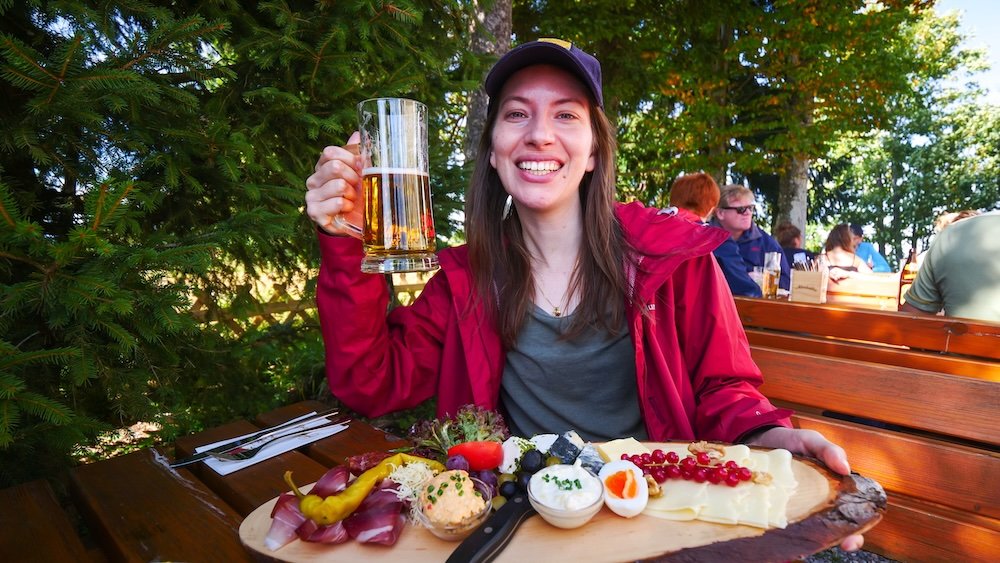
What To Eat and Drink in Gaisberg, Austria
Gaisberg might be known for its panoramic views. But the culinary scene here is equally compelling. Nestled within the broader Salzburg region, Gaisberg’s food culture revolves around hearty alpine specialties, and fresh ingredients. Here’s an overview of the must-try dishes and drinks:

Alpine Classics
- Kasnocken / Kasspatzen: Soft dumplings or small pasta bits smothered in melted cheese, often topped with crispy onions. Perfect after a brisk hike or winter sledding.
- Wiener Schnitzel: A golden-breaded veal (or pork) cutlet, typically served with potato salad or fries—an Austrian staple that rarely disappoints.
- Knödel: Dumplings of various sorts—spinach, speck, or cheese—plated solo or floating in soups.
Why They Shine: Each dish merges simplicity with satisfying depth. In mountain zones like Gaisberg, these meals help you refuel quickly while tasting tradition.
Tip: Pair dumplings with a tangy side salad or mild pickles, balancing out the richness.
Soups & Stews
Gaisberg restaurants excel at hot bowls that warm you inside-out. Frittatensuppe features slivered crepe strips in savory broth, while Gulasch (goulash) offers slow-simmered beef chunks in a paprika-laden sauce. If you’re feeling experimental, try Leberknödelsuppe: a liver dumpling resting in clear soup, delivering an earthy twist. These robust spoonfuls define Austrian comfort food, especially after windy hill treks. Bread baskets accompany most bowls, helping soak up leftover broth. That’s your cue to relish every last drop.
Tip: Opt for soup before a main course—portions here can be large, so pacing is key.
Sweet Treats
Desserts in Gaisberg celebrate Austria’s sweet heritage, from Apfelstrudel (apple strudel) to Kaiserschmarrn (shredded pancake dusted with powdered sugar). Some huts also serve homemade Topfenstrudel (quark cheese strudel), offering a tangy twist. Meanwhile, fruit tarts appear in certain seasons—plum or apricot in late summer, for instance. Don’t be shy about indulging in whipped cream toppings or a swirl of vanilla sauce. After all, you’ve earned these calories tackling trails or braving paragliding leaps.
Tip: Try Kaiserschmarrn with a side of Zwetschgenröster (plum compote)—the combo is epic.
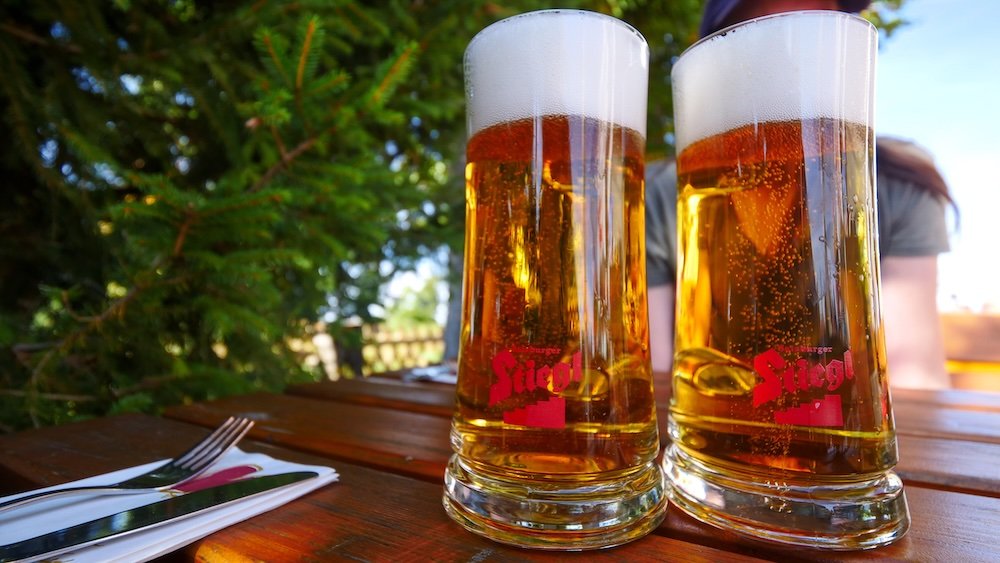
Local Beverages
- Beer: Austrian brews like Stiegl or Gösser often dominate taps, but smaller craft or alpine microbreweries exist too.
- Wine: Though Gaisberg sits near mountainous zones, Austrian whites (Grüner Veltliner, Riesling) or reds (Zweigelt) pair well with many dishes.
- Schnapps: Fruit-based brandies like Marillenschnaps (apricot) or Williamsbirne (pear) finish meals with a warming zing.
Tip: A small schnapps post-meal aids digestion—just sip, don’t gulp.
Cafe Culture
Even on a modest peak, coffee culture thrives. Simple huts or Gasthöfe brew robust espressos and cappuccinos, sometimes complemented by sweet pastries. On sunny afternoons, an outdoor table plus a latte invites you to watch hikers pass and paragliders float overhead. The synergy of crisp air and aromatic coffee is divine. If you’re more tea-inclined, Alpine herb infusions might appear on menus—often grown locally, merging floral, minty, or slightly spicy notes.
Tip: Grab a seat near a window or terrace for that signature mountains-plus-hot-drink moment.
Seasonal Focus & Eco-Ethos
Gaisberg’s farm culture yields fresh milk, eggs, and produce that shift with the calendar. Summer might highlight salads from local fields, while autumn sees game meats or mushrooms from nearby forests. Winter leads to heartier stews and root veggies perfect for battling the chill. Eco-consciousness resonates, with many spots touting regional sourcing or organic practices. The result is vibrant flavors that echo the terrain—taste the difference in each bite.
Tip: Ask about daily or seasonal specials—these reflect whatever’s at peak freshness or newly harvested.
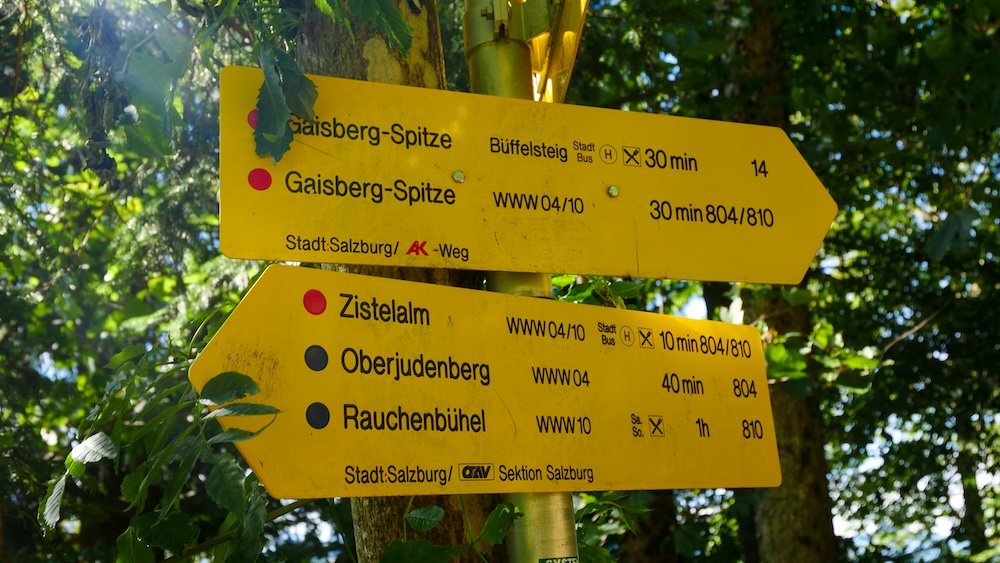
Tours For Visitors To Gaisberg, Austria
Organized tours around Gaisberg cater to a range of travel styles. Some highlight active pursuits—like guided hikes or paragliding lessons—while others delve into local history or food culture. Below is a rundown of things to do on tour that enriches your Gaisberg experience.
1) Guided Sunrise or Sunset Hike
Mountain guides often lead small groups on early-morning or twilight treks up Gaisberg. They know the safest, most scenic routes, ensuring you’re at the summit precisely when the sky bursts into sunrise pink or sunset orange. Along the way, they offer tidbits on native flora, local folklore, and the region’s ecological nuances. Once at the top, you might share a communal thermos of coffee or tea while the sun performs its daily spectacle. The return journey typically feels more relaxed—daylight or moonlight revealing a different perspective on the same path. This approach suits those who’d like extra reassurance about trail conditions or companionship during quieter hours.
- Booking: Through Salzburg-area mountain guide companies or local tourism offices.
- Group Size: Often capped at 8–12 people for an intimate vibe.
- Tip: Guides can suggest hidden viewpoints beyond the standard summit photo op.
Tip: Pack a flashlight—some guided hikes run partially in darkness, especially before sunrise.
2) Paragliding Intro Course
If tandem flights sound too passive, a paragliding intro course turns you into the pilot—under watchful eyes, of course. Short classroom sessions teach fundamentals: harnessing, weather reading, and safe landing methods. Then, you tackle small practice slopes, mastering controlled takeoffs before eventually gliding from Gaisberg’s higher vantage. Instructors keep radio contact, coaching you mid-flight if needed. Though more time-intensive than a single tandem jump, this immersion fosters real skill and confidence. Even if you don’t perfect it all in a day, you’ll taste the addictive rush of free flight above rolling meadows.
- Duration: 1–3 days, depending on how comprehensive you want the training.
- Gear: Provided by the school—helmet, harness, glider—but bring sturdy shoes and weather-appropriate clothing.
- Tip: Some schools offer certification pathways, so you can progress beyond beginner if the paragliding bug bites.
Tip: Check weight/health requirements—paragliding demands certain safety parameters to ensure a stable flight.
3) E-Bike Tours with Culinary Stops
E-bike tours around Gaisberg let you savor the outdoors without total leg burn on steep inclines. Guided versions typically blend scenic routes with strategic meal or snack halts—like local huts serving Kasspatzen or orchard stands offering fresh fruit. The e-bike’s pedal-assist ensures a comfortable pace, and guides share stories of Gaisberg’s flora, fauna, and village life. You’ll crest ridges for vantage photos, maybe watch paragliders launching, then descend gently through winding lanes. If you’re new to e-biking, instructors cover usage basics, so you’ll feel at ease. This tour style suits families or casual riders keen on an active but not grueling day out.
- Planning: 3–5 hours total, including meal breaks and photo stops.
- Equipment: E-bike, helmet, and sometimes daypacks if you need them.
- Tip: Guides usually relay local history or highlight hidden chapels or viewpoints.
Tip: Arrive fueled—a light breakfast ensures you’ve got energy even before the tour’s snack stops.
4) Farm & Cheese-Making Excursion
Farm-based cheese-making tours illustrate how Gaisberg’s milk transforms into tangy, aromatic wheels. You’ll step inside a working dairy farm or cheesery, witnessing the day’s fresh milk turned into curds, then pressed and aged. Some tours invite you to stir vats or shape cheese molds, a hands-on approach that demystifies the entire process. Afterward, taste tests introduce you to young vs. mature cheeses, served with crusty bread or homemade jam. In many spots, farmers themselves lead the tours, weaving personal anecdotes of multi-generational traditions. It’s an authentic slice of rural life—one that lingers on your tongue.
- Booking: Directly with local producers or via Gaisberg tourism offices.
- Kid-Friendly: Younger visitors delight in seeing animals, though keep in mind strong dairy odors.
- Tip: Some tours offer cheese to purchase at discounted rates fresh off the block.
Tip: Bring a small cooler bag if you plan to buy cheese, especially in warmer months.
5) History & Culture Walk
For those less enthralled by adrenaline, a history and culture walk reveals Gaisberg’s quieter stories. Guides might point out ancient chapels or shrines perched on hills, recounting how villagers prayed for safe harvests or travelers. They’ll detail pilgrimages that once crept up these slopes, how dairy farmers shaped the region, and the mountain’s role in defending Salzburg from medieval threats. The pace is gentle—stops at small vantage huts or local inns for a snack. Cultural tours also highlight typical Tyrolean architecture, such as wooden eaves carved with alpine motifs. By the tour’s end, you’ll see Gaisberg as more than a pretty backdrop—rather, a living thread in Austrian heritage.
- Group Composition: Typically older travelers or families wanting a relaxed approach.
- Route: Could begin near the Gaisberg bus drop-off, meandering around crest trails.
- Tip: Guides may suggest local books or postcards if you want to continue exploring the region’s lore.
Tip: Bring a notebook—some historical anecdotes are worth jotting down or referencing later.
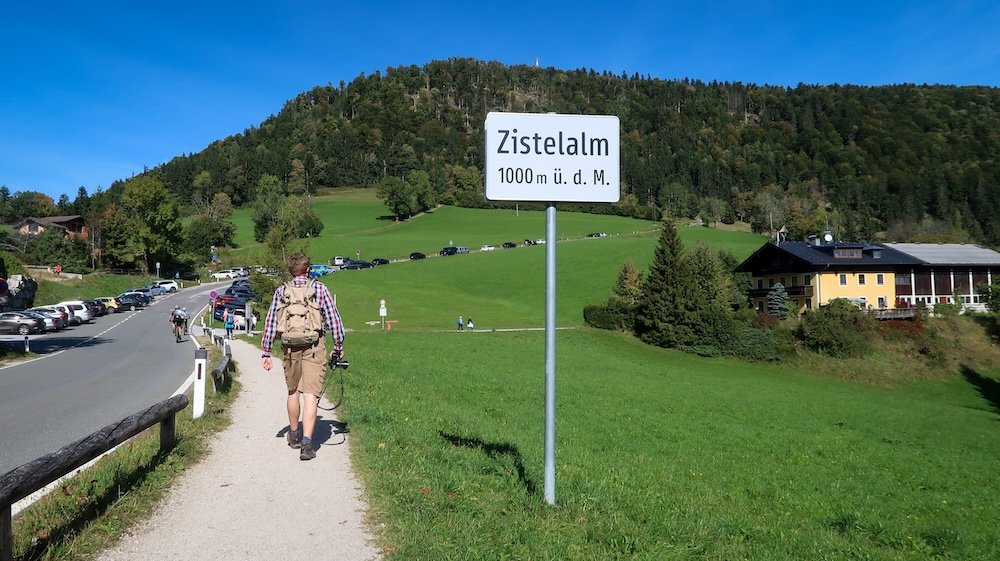
Gaisberg Accommodations Guide: Hotels, Guesthouses and Hostels
Staying on or near Gaisberg shapes how intimately you connect with its alpine wonders. Below are lodging styles that anchor you within easy reach of things to do—from dawn hikes to scenic drives, all sprinkled with Tyrolean warmth.
Hotels
Hotels near Gaisberg range from upscale spa retreats boasting panoramic terraces to simpler, more contemporary spots closer to Salzburg’s urban fringe. If you want a direct mountain vibe, aim for hillside properties with balconies that open to rolling vistas. Many hotels pride themselves on local décor—wooden beams, embroidered fabrics, and maybe an in-house restaurant serving Austrian fare. Some also partner with local guides or offer discount vouchers for cable cars, turning your stay into a mini all-in-one package. For city-lovers, Salzburg’s central hotels let you dip into metropolitan life, though you’ll be a short bus or drive away from Gaisberg’s foothills.
- Price Points: Mountain-luxe properties might start around €120–€200 per night in peak seasons.
- Seasonal Variation: Rates often spike mid-summer or December, so book early.
- Tip: Seek “Hochzeitszimmer” (honeymoon rooms) even if not newlyweds—these can be extra romantic with prime views.
Tip: Ask about half-board—some hotels bundle dinner and breakfast into a slightly discounted package.
Guesthouses (Gasthöfe)
Guesthouses near Gaisberg’s villages blend coziness with personal interaction. Usually family-run, they offer modest but comfy rooms, each brimming with Alpine flair—wooden furniture, checkered curtains, and soft duvets. You’ll likely enjoy homemade breakfasts featuring farm-fresh eggs or jam. Hosts might chat about local hikes, recommend hidden viewpoints, or share stories from decades of living on the mountain. This intimate vibe suits travelers keen on forging deeper local connections. A single conversation in the breakfast room can yield invaluable tips for your daily itinerary.
- Rates: Tends to be cheaper than hotels, around €60–€100 per night depending on room type.
- Evening Meals: Some guesthouses serve dinner; a boon if you prefer minimal commuting after a big day out.
- Tip: Expect quiet evenings—village life slows down early, but starry nights often compensate for nightlife.
Tip: Browse local tourism websites—some Gasthöfe skip major booking platforms, so direct contact can reveal hidden gems.
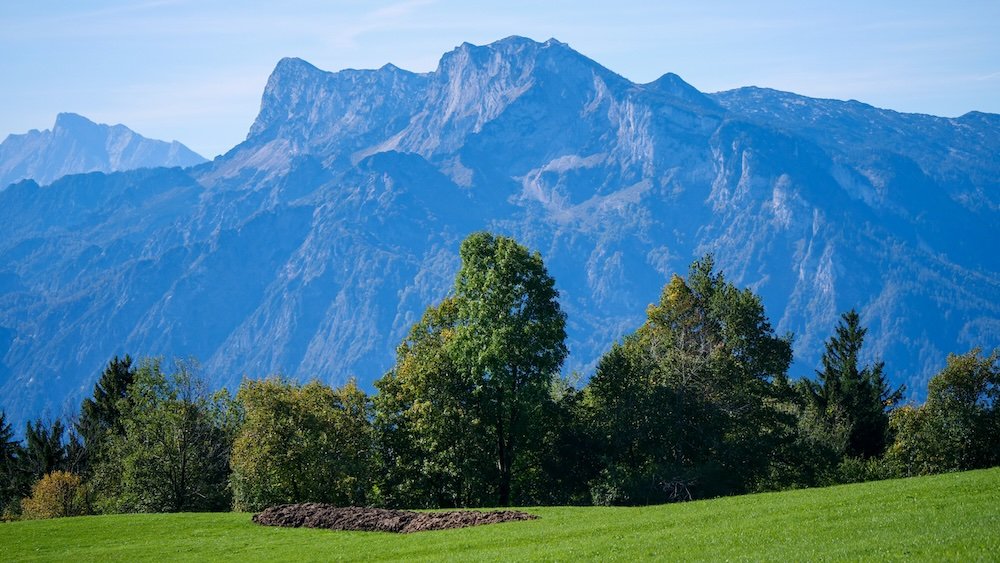
Farm Stays
For total immersion, try a farm stay where the Gaisberg slopes meet rural homesteads. Picture cozy rooms under a pitched roof, cows or goats in a nearby barn, and the gentle clang of cowbells lulling you to sleep. Breakfast might include freshly churned butter, homemade yogurt, or artisanal bread. Some farms encourage visitor involvement: feeding animals, picking vegetables, or even short barn tours. It’s a hands-on way to taste local life beyond a quick tourist veneer.
- Atmosphere: Warm, laid-back—like an extended family welcoming you into everyday chores.
- Child-Friendly: Kids often love seeing farm animals up close, forging joyous memories.
- Tip: Some farms also rent e-bikes or have scenic picnic spots on their property.
Tip: Bring wellies—farm terrain can be muddy, especially after rains or morning dew.
Hostels & Budget Lodging
While Gaisberg isn’t saturated with hostels, a few budget-friendly spots exist near Salzburg’s outskirts, bridging city convenience and mountain proximity. Dorm or private rooms come simply furnished, but communal lounges invite you to swap travel tips with fellow adventurers. Because Gaisberg is so close, a short bus or drive still gets you onto the trails fast. The vibe is youthful, though all ages can book if you appreciate cost-savings and social mingling. Check reviews to gauge cleanliness and any add-ons like free breakfast or bike rental deals.
- Communal Kitchens: Perfect for storing local cheeses or preparing quick meals.
- Late Check-Ins: Hostels often have flexible reception hours, though confirm if you’re arriving past 10 PM.
- Tip: Some staff are mountaineering buffs—ask them for unmarked hiking routes or local events.
Tip: Carry earplugs—dorm setups can mean unpredictable roommates with varied schedules.
City Stays in Salzburg
If you can’t find lodging right on Gaisberg, staying in Salzburg city is a viable alternative. A morning bus or short taxi ride places you at Gaisberg’s base or summit quickly. City hotels vary from boutique to chain, suiting diverse budgets. Even if you prefer a mountainous vibe, Salzburg’s cultural wealth—museums, classical concerts, baroque architecture—can complement your Gaisberg outings. By mixing urban exploration with alpine day trips, you get the best of both worlds.
- Time to Gaisberg: 15–30 minutes by bus or car, depending on traffic.
- Nightlife: Salzburg offers more late-night dining or cultural shows if you want that after a Gaisberg day.
- Tip: Some city properties offer shuttle deals or packaged tours including Gaisberg visits.
Tip: Scout hotels near bus stops—less hassle if you’ll rely on public transport for daily Gaisberg commutes.
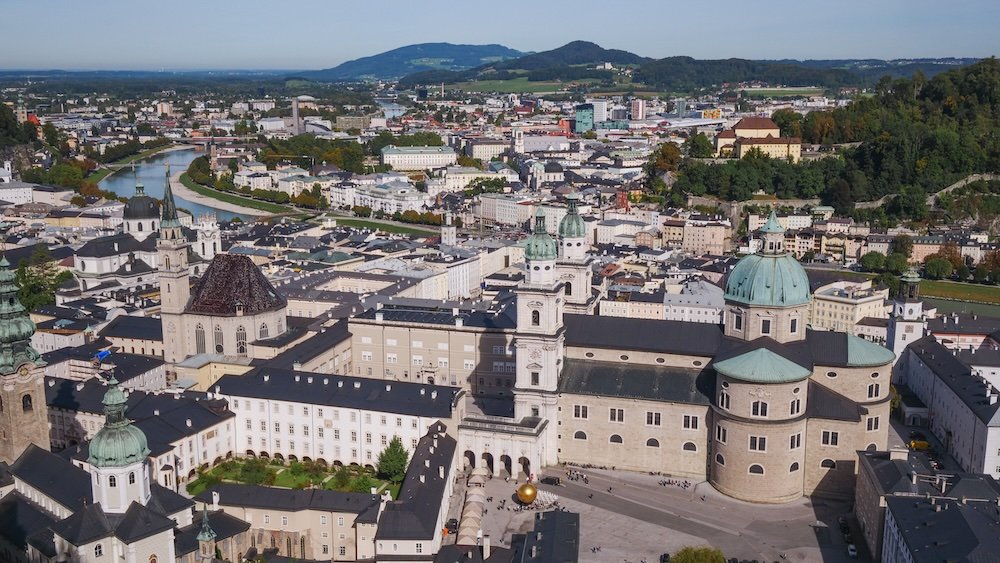
Day Trips From Gaisberg, Austria
If you’ve settled near Gaisberg as your alpine base, you might crave extra things to do beyond immediate summit hikes and local inns. Good news: the surrounding region abounds with day trip spots that enrich your Tyrolean escapade. Below are five recommended excursions, each within easy reach by car or public transport.
Our Travel Video From Salzburg, Austria on Samuel and Audrey YouTube Channel: Nomadic Samuel + That Backpacker hosting
1) Salzburg Old Town
Though Gaisberg is practically Salzburg’s backyard mountain, dedicating a full day to Salzburg Old Town ensures you won’t miss baroque wonders and historic corners. Start with the Hohensalzburg Fortress, perched on a cliff, offering sweeping city views. Then stroll narrow streets around Getreidegasse, famous for intricate guild signs and Mozart’s Birthplace. Explore the Salzburg Cathedral’s ornate interior, or sip coffee in a centuries-old café. Afternoon might include a leisurely walk along the Salzach River or rummaging through local shops for classical music memorabilia. By evening, you might catch a concert in a grand hall—capping an enchanting city break from your mountain retreat.
- Transport: A 15–20 minute bus or drive from Gaisberg leads you downtown.
- Culinary: Don’t skip an original Mozartkugel (chocolate praline) for a sweet souvenir.
- Tip: If you love baroque, the DomQuartier covers palaces, galleries, and the cathedral in one ticket.
Tip: Pre-book fortress tours—fast-track entries can save precious time on busy weekends.
2) Hallstatt & Salzkammergut
While slightly farther out (about 1.5–2 hours by car), Hallstatt in the Salzkammergut region is often called the “postcard village.” A UNESCO site hugging a glassy lake, its pastel houses reflect in the water, framed by towering peaks. You can wander the old salt mine (Salzwelten) perched above, where a funicular rides up to panoramic platforms. Hallstatt’s narrow lanes bustle with travelers, so aim for early morning arrivals to sidestep midday crowds. Afterwards, dip into nearby lakes like Wolfgangsee or Attersee for scenic drives or short boat rides. The route back to Gaisberg reveals more lake-laced vistas, completing a day of watery enchantment.
- Caution: Hallstatt can be extremely busy—try a weekday or off-season for a calmer vibe.
- Photos: The “Classic Village Viewpoint” near the southwestern edge is iconic, but also check lesser-known angles.
- Tip: Some travelers choose cable car or salt mine tours—book in advance if you’re set on them.
Tip: Pack a lunch—the lakeside can be pricey, and a homemade picnic along the shoreline is a sweet alternative.
3) Eagle’s Nest (Kehlsteinhaus) Across the Border
In neighboring Germany’s Berchtesgaden region, the Eagle’s Nest (Kehlsteinhaus) perches atop a sheer mountain, historically infamous as Hitler’s retreat. Today, visitors ascend via a special bus and brass elevator, stepping into a panoramic restaurant and viewing terrace with breathtaking peaks. The site’s raw beauty contrasts with its dark WWII connotations. Combine with a stop at the Dokumentation Obersalzberg for historical context. On your return, you might explore Berchtesgaden’s charming Old Town or detour for a boat ride on Königssee.
- Drive Time: Around an hour from Gaisberg, possibly less with smooth traffic.
- Seasonality: Eagle’s Nest typically opens mid-May to October, pending snowfall.
- Tip: Lines can form at bus stops—arrive early to avoid lengthy waits.
Tip: Wear layers—winds up top can be chilly even on otherwise warm days.
4) Grossglockner High Alpine Road
If you’re itching for spectacular mountain roads, the Grossglockner High Alpine Road fits the bill. Roughly 2 hours south of Gaisberg, this winding pass leads to Austria’s highest peak, Grossglockner (3,798 m). Panoramic stops dot the route, unveiling glaciers, wildflowers, and perhaps ibex if luck’s on your side. You can stop at the Franz-Josefs-Höhe visitor center for prime Glockner views and short glacier hikes. The journey alone, with hairpin curves and soaring vistas, forms half the joy. Plan a full day to savor scenic pullouts and let the scale of the Alps dazzle you.
- Toll: The road charges an entrance fee for maintenance—cash or card accepted.
- Open Season: Typically from May to October, often closed in winter due to heavy snow.
- Tip: Some vantage platforms explain geology, so read interpretive signs to appreciate the landscape’s formation.
Tip: Start early—each viewpoint begs to be photographed, and you don’t want to rush through them.
5) Kitzbühel & Ski Resorts
Though Gaisberg itself hosts appealing slopes in winter, a day trip to Kitzbühel or another famed Tyrolean resort can elevate your ski (or summer mountain) experience. Kitzbühel’s medieval center pairs pastel houses with upscale boutiques and swanky cafés. In winter, the legendary Hahnenkamm downhill draws world-class racers, though novices can stick to gentler runs. Summer sees hikers, bikers, and families exploring alpine meadows with chairlift support. The synergy of an elegant town vibe, top-notch lifts, and a swirl of mountain sports cements Kitzbühel’s global repute.
- Travel: 1–1.5 hours by car from Gaisberg, or use regional trains/buses with possible transfers.
- Après-Ski: Cozy taverns or luxury bars, depending on your preference.
- Tip: If skiing, rent gear near the slopes for the latest equipment.
Tip: Check events—Kitzbühel hosts vibrant skiing competitions and summer festivals that can shape your experience.
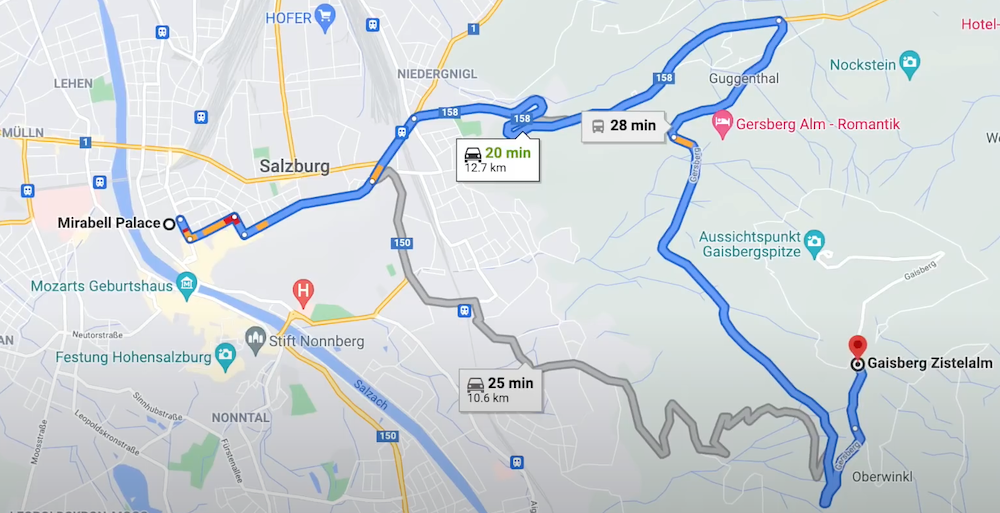
Gaisberg Transportation Guide
Your things to do around Gaisberg hinge on smooth transport—be it local buses, scenic drives, or brisk strolls from Salzburg. Below is a breakdown of how to traverse Gaisberg efficiently, so you can focus on mountain vistas and cultural joys.
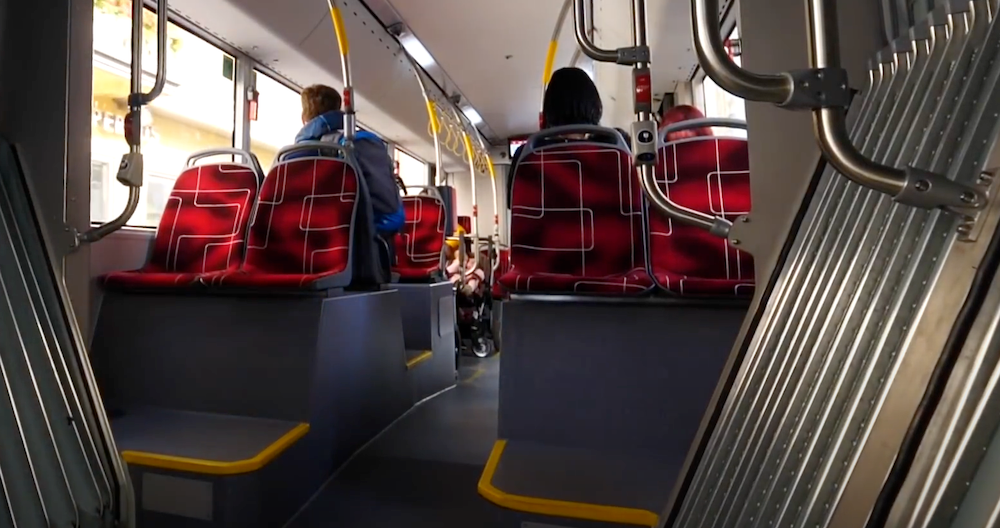
Bus & Public Transit
Salzburg operates a reliable bus network that includes the Gaisberg Bus—a direct route from downtown. This service typically runs hourly or more in high season, carrying hikers, paragliders, and sightseers up winding roads to vantage points near the summit. Buses feature digital signs and sometimes onboard route announcements. If you have a Salzburg Card or region pass, it might cover the bus fare—double-check details. Weekday schedules are consistent, but Sunday or holiday frequencies can dip. Riding the bus spares you parking issues on narrow mountain roads and offers a relaxing preview of rolling hills as you ascend.
- Bus Stop: Often labeled “Gaisberg” or “Zistelalm” for the main mid-station.
- Ticket Purchase: Onboard from the driver or at city ticket machines—carry some euros in small denominations.
- Tip: Plan around the last return bus—afternoon departures might be your final chance unless you fancy a steep trek back down.
Tip: Sit on the left heading up—the best vantage for city-lake glimpses.
Driving & Car Rental
If you prefer autonomy, a rental car helps you reach less-frequented corners or pivot easily to other day trips. Gaisberg’s main road from Salzburg climbs steadily, dotted with hairpin bends and scenic pullouts. Along the route, you’ll find small parking lots near viewpoints or eateries. Just remember that weekends or sunny holidays can see these lots fill up fast, so arrive early if you want a guaranteed spot. Snow chains or winter tires become crucial in snowy months, as conditions can shift rapidly at higher altitudes. That said, the thrill of an open road meandering through Alpine meadows is tough to beat.
- Fuel: Check your gauge; fueling stations near Gaisberg can be sparse.
- Parking Fees: Some viewpoints or restaurants charge minimal fees or require a small donation.
- Tip: Drive slowly—hairpins plus potential bikers or wildlife crossing demand caution.
Tip: Look for scenic lay-bys—pulling over for a quick photo or stretch break is half the fun.
Hiking Paths & Walking Trails
For those who relish slower, immersive movement, footpaths crisscross Gaisberg’s slopes. From Salzburg’s outskirts, you can follow signposted routes that ascend gradually, or combine bus rides to mid-stations with partial walks. Trail quality is generally good, with color-coded difficulty markers. In winter, certain paths remain open for snowshoeing or gentle wanders; do verify if a route is groomed for winter use. Start early to enjoy quieter trails, especially if you aim for a sunrise or sunset vantage. Carry a small daypack with water, snacks, and a weatherproof layer—mountain climates can shift on a whim.
- Maps: Local tourism offices or online platforms (e.g., Bergfex) provide detailed topographic info.
- Route Combinations: Some folks hike up, then bus down, or vice versa.
- Tip: Wear sturdy footwear—even easy trails can involve loose gravel or muddy patches.
Tip: Check sign times—posted walking durations are estimates; your pace may vary, so plan an extra half-hour buffer.
Taxis & Ride-Hailing
Taxis from Salzburg city center to Gaisberg’s foothills or mid-stations are feasible but can get pricey. If you’re a group of four splitting the fare, it might be reasonable. Fares typically run on meters, though some drivers negotiate fixed rates. Ride-hailing apps like Uber or Bolt are less prevalent in rural Austrian areas, so rely on local taxi services or phone calls if you miss the last bus. Ensure you have a driver’s contact or a local taxi number in case you want a late-evening pickup post-sunset stroll.
- Potential Surcharge: If you’re going beyond standard city zones, confirm any extra fees.
- Language: Basic English is common, but be ready with a note naming your exact stop or viewpoint.
- Tip: If possible, arrange a return pick-up with the same driver to avoid long waits.
Tip: Use public bus times as a fallback in case taxi availability is scarce.
Biking & Cycling
For those keen on pedal power, cycling is a scenic way to approach Gaisberg, though the climb is not for the faint-hearted. E-bikes mitigate steep sections, while road cyclists love the challenge. Certain roads have bike-friendly shoulders, but watch for tight hairpins. Early morning or late afternoon rides see less vehicle traffic, so you can ascend with more ease. If you’re uncertain about the entire climb, take the bus partway, then cycle the gentler upper portion. The reward? Expansive views, a healthy sweat, and bragging rights that you conquered Gaisberg on two wheels.
- Rentals: Salzburg city shops carry road bikes, mountain bikes, or e-bikes.
- Equipment: A helmet is a must, plus reflective gear if you’re near dusk.
- Tip: Some local bike clubs organize group rides—join them if you crave camaraderie.
Tip: Check the weather—wind gusts can be tough on exposed segments, making e-bikes especially useful.
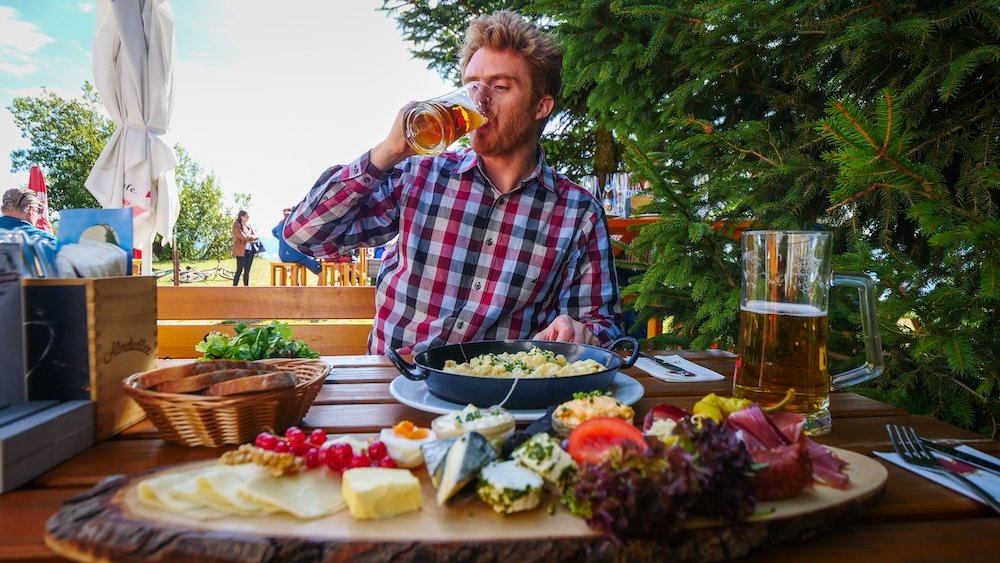
Gaisberg Travel Guide: Conclusion
Gaisberg stands as a true highlight of the Austrian landscape. It’s close enough to Salzburg for convenience, yet distant enough to cradle you in mountain serenity. Through dawn hikes, paragliding thrills, hearty meals in rustic huts, and panoramic vantage points, you’ve uncovered a region full of adventure. The local vibe remains down-to-earth, shaped by farmers, innkeepers, and outdoor enthusiasts who share a common pride in their alpine backyard.
If you arrived in search of things to do, we’ve covered plenty: from sunrise treks and cheese-making demos to scenic bus rides and e-bike tours. Yet Gaisberg’s essence extends beyond bullet points. It’s in the hush of evergreen forests at midday, in the laughter of families sledding down fresh powder, and in the communal warmth of a tavern where strangers bond over steaming bowls of dumplings. This intangible magic can’t be forced—it emerges from your willingness to slow down and engage with your surroundings.
Final Thoughts
At the same time, Gaisberg doesn’t demand hardcore mountaineer status to appreciate its wonders. Gentle trails cater to leisurely walkers, cable cars or bus routes simplify your approach, and accommodations range from cozy farm stays to bigger hotels near Salzburg’s lively center. The area champions inclusivity, welcoming solo travelers, couples seeking romance, families with kids in tow, or even older adventurers who still yearn for alpine breezes.
Whether you choose to return next season for a fresh dusting of snow or decades from now with a new generation in tow, Gaisberg’s vistas will remain timeless. It’s a corner of Austria that endures gracefully, bridging centuries of alpine tradition with the enthusiastic footsteps of today’s explorers. We hope your time here leaves you invigorated, inspired, and longing for another breath of that pure mountain air. Until then, safe travels!
